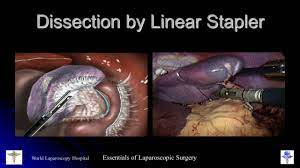Optimizing Port Position in Minimal Access Surgery: Strategies and Techniques for Improved Outcomes
Add to
Share
1,553 views
Report
2 years ago
Description
Port positioning is a crucial aspect of minimal access surgery, and it can greatly impact the success and safety of the procedure. In this topic, we will explore the importance of optimizing port position in minimal access surgery and discuss various strategies and techniques to achieve the best possible outcomes. We will also examine the factors that influence port placement, such as the patient's anatomy, the type of procedure, and the surgeon's preference. By learning how to effectively position ports, surgeons can reduce the risk of complications, minimize postoperative pain, and improve patient recovery. In minimal access surgery, also known as laparoscopic surgery, the positioning of the surgical ports is critical for achieving optimal outcomes. The placement of ports affects the surgeon's ability to visualize and access the surgical site, as well as the patient's recovery time and potential for complications. This comprehensive guide explores the strategies and techniques for optimizing port position in minimal access surgery. It covers the principles of port placement, including anatomical considerations and patient-specific factors such as body habitus and previous surgical history. The guide also provides practical tips and tricks for port placement, such as the use of imaging modalities and the importance of proper instrument selection. By optimizing port position in minimal access surgery, surgeons can improve visualization, reduce operative time, and minimize patient discomfort and complications. This guide is an essential resource for surgeons seeking to enhance their skills and provide the best possible care to their patients. When it comes to minimally invasive surgery, port position plays a crucial role in the success of the operation. The location and angle of the ports can greatly affect the surgeon's ability to access and maneuver the surgical instruments, as well as the patient's postoperative pain and recovery time. This topic delves into the importance of optimizing port position in minimal access surgery and explores various strategies and techniques to achieve better outcomes. It covers key factors that should be considered when determining port placement, such as the patient's body habitus, the type of surgery being performed, and the surgeon's preferred technique. Additionally, the topic examines how advancements in technology, such as robotic-assisted surgery, have impacted port position and the potential benefits of these innovations. By emphasizing the significance of proper port positioning, this topic provides valuable insights for surgeons seeking to improve their techniques and enhance patient outcomes.
Similar Videos





